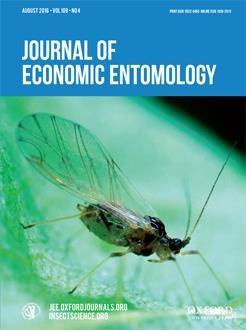Parasitoids can utilize the nutrition of host eggs to culture their own offsprings. Host qualities, including size, age, and species, influence parasitism preference and fitness of the parasitoid offsprings. However, an interesting question here is whether the parasitoids have the ability of recognizing fertilized and nonfertilized host eggs. In this study, we investigated the performance of three indigenous Trichogramma species (Trichogramma japonicum Ashmead, Trichogramma dendrolimi Matsumura, and Trichogramma chilonis Ishii) on fertilized and nonfertilized eggs of their native host, Chilo suppressalis (Walker). The results showed that the three Trichogramma species tested could recognize fertilized and nonfertilized eggs of C. suppressalis. The different fertilization status eggs of C. suppressalis were all accepted by T. japonicum, T. chilonis, and T. dendrolimi with a clear tendency that they preferred to parasitize fertilized eggs whether under no-choice or choice conditions. All Trichogramma species successfully completed development in parasitized eggs of C. suppressalis regardless if the host eggs were fertilized or not. There was similar adult emergence rate, development time, and female progeny between fertilized and nonfertilized eggs for all Trichogramma species with an exception of development for T. chilonis. Trichogramma chilonis had shorter developmental time in fertilized eggs than in nonfertilized ones. Whether in fertilized or nonfertilized eggs, T. dendrolimi had longer development time than other two Trichogramma species. However, T. dendrolimi had the largest percentage of female progeny on fertilized eggs, followed by T. japonicum, and T. chilonis had the least percentage of female progeny. The present study indicates that Trichogramma can recognize fertilized and nonfertilized host eggs and use the nonfertilized eggs to finish offspring development.
How to translate text using browser tools
22 January 2016
Parasitism and Suitability of Fertilized and Nonfertilized Eggs of the Rice Striped Stem Borer, Chilo suppressalis (Lepidoptera: Crambidae), for Trichogramma Parasitoids
Xu Yang,
Yu-Li Qu,
Zhi-Yi Wu,
Ying Lin,
Chang-Chun Ruan,
Nicolas Desneux,
Lian-Sheng Zang
ACCESS THE FULL ARTICLE
It is not available for individual sale.
This article is only available to subscribers.
It is not available for individual sale.
It is not available for individual sale.

Journal of Economic Entomology
Vol. 109 • No. 4
August 2016
Vol. 109 • No. 4
August 2016
Chilo suppressalis
host selection
host suitability
nonfertilized host egg
Trichogramma




